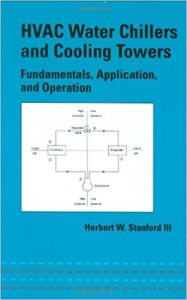HVAC Water Chillers and Cooling Towers: Fundamentals, Application, and Operation 1st Edition
HVAC Water Chillers and Cooling Towers: Fundamentals, Application, and Operation 1st Edition
HVAC Water Chillers and Cooling Towers provides fundamental principles and practical techniques for the design, application, purchase, operation, and maintenance of water chillers and cooling towers. Written by a leading expert in the field, the book analyzes topics such as piping, water treatment, noise control, electrical service, and energy efficiency for optimal system and equipment performance and offers extensive checklists, troubleshooting strategies, and reference data, as well as recommended specifications for the procurement of new or replacement equipment. This reference also discusses proper installation and placement of chillers and cooling towers, start-up, and capacity
You can also read HVAC Water Chillers and Cooling Towers: Fundamentals, Application, and Operation, Second Edition
Product details
- Series: Mechanical Engineering (Book 156)
![Water Chillers and Cooling Towers]()
- Hardcover: 295 pages
- Publisher: CRC Press; 1 edition (April 4, 2003)
- Language: English
- ISBN-10: 0824709926
- ISBN-13: 978-0824709921
- Product Dimensions: 6.2 x 0.8 x 9 inches
- Shipping Weight: 1.2 pounds
There are two fundamental types of HVAC systems designed to satisfy building cooling requirements: direct expansion (DX) systems, in which there is direct heat exchange between the building air and the refrigerant, and secondary refrigerant systems that utilize chilled water as an intermediate heat exchange medium to transfer heat from the building air to the refrigerant.
Chilled water systems are the heart of central HVAC cooling, providing cooling throughout a building or group of buildings from one source. Centralized cooling offers numerous operating, reliability, and efficiency advantages over individual DX systems and, on a life-cycle basis, can have significantly lower total cost.
Every central HVAC cooling system is made up of one or more refrigeration machines, or water chillers.
The water chiller may use the vapor compression refrigeration cycle or the absorption refrigeration cycle.


Comments are closed.